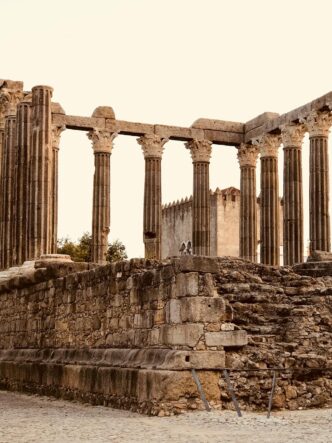Ferdinand Magellan: The First Circumnavigator
Early Life and Background
Ferdinand Magellan was born around 1480 into a family of minor Portuguese nobility. He grew up in a time when exploration was becoming very important. As a young man, he became a skilled sailor and worked for the Portuguese Crown. However, he had a disagreement with King Manuel I, which led him to seek support from Spain instead.
Voyage for Spain
In 1519, Magellan set out on a daring journey with five ships to find a westward route to the Spice Islands. His expedition faced many challenges, including:
- Storms that threatened the ships.
- Mutinies from crew members who were unhappy with the journey.
- Shipwrecks that caused losses along the way.
Despite these difficulties, Magellan discovered the Strait of Magellan, which allowed his fleet to pass from the Atlantic to the Pacific Ocean. He was the first European to cross the Pacific, but sadly, he was killed in the Philippines in 1521 before he could complete the journey.
Legacy and Impact
Magellan’s expedition was significant because it showed that the world was much larger than people had thought. His crew eventually returned to Spain in 1522, completing the first circumnavigation of the Earth. This journey changed the way people viewed the world and opened up new trade routes.
Magellan’s journey not only changed maps but also changed the course of history, proving that the Earth could be circled by sea.
Vasco da Gama: Opening the Sea Route to India

Early Expeditions
Vasco da Gama was a Portuguese navigator who played a crucial role in connecting Europe and Asia. His early journeys were important for understanding the seas and trade routes. Here are some key points about his early expeditions:
- First Voyage: In 1497, he set sail from Portugal with four ships and 170 men.
- Cape of Good Hope: He rounded this significant landmark, which was a major challenge for sailors of his time.
- Local Guidance: A local pilot helped him navigate the Indian Ocean, leading to his arrival in India.
Historic Voyage to India
Da Gama’s journey to India was groundbreaking. Here’s what made it special:
- Landing in Calicut: He reached Calicut on May 20, 1498, marking the first time a European had arrived in India by sea.
- Trade Agreements: He established trade relations with the local ruler, the Zamorin, which opened doors for future trade.
- Spice Trade: His voyage allowed Portugal to dominate the spice trade, which was highly valuable in Europe.
Influence on Portuguese Trade
The impact of da Gama’s voyages was immense:
- Economic Boost: The spice trade significantly boosted the Portuguese economy.
- Colonial Empire: His discoveries helped Portugal build a vast colonial empire stretching from Africa to Asia.
- Long-lasting Legacy: Da Gama’s achievements paved the way for future explorers and established Portugal as a major maritime power.
Vasco da Gama’s journey was not just about exploration; it was about creating connections that changed the world forever.
Bartolomeu Dias: Rounding the Cape of Good Hope

Early Life and Maritime Background
Bartolomeu Dias was born around 1450 in Portugal. He came from a family with a strong maritime background, which influenced his career as an explorer. Little is known about his early life, but he became a skilled navigator and sailor.
Discovery of the Cape of Good Hope
In 1488, Dias achieved a remarkable feat by becoming the first European to sail around the Cape of Good Hope. This was a significant moment in history because:
- It opened a new sea route to India and Asia.
- It proved that the Indian Ocean was connected to the Atlantic Ocean.
- It laid the groundwork for future explorations by other navigators, including Vasco da Gama.
Impact on European-Asian Trade Routes
Dias’s journey had a lasting impact on trade between Europe and Asia. His discovery helped establish:
- New trade routes that were crucial for the spice trade.
- Increased interest in exploration among European nations.
- A better understanding of the geography of the southern hemisphere.










